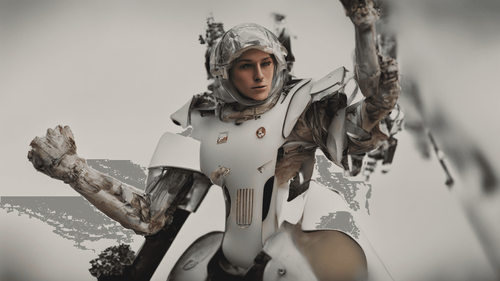
Introduction: Pioneering the Fusion of Language and Visuals
In the ever-evolving landscape of artificial intelligence, OpenAI's breakthrough in generating images from text is a phenomenon that has captured the attention of tech enthusiasts, creatives, and researchers alike. This revolutionary capability brings together the power of language and imagery, offering a glimpse into a future where imagination and technology seamlessly intertwine. This article delves into the intriguing realm of OpenAI's image generation technology, shedding light on its mechanism, applications, and the limitless horizons it opens for human creativity.
Open AI Generate Image from Text: How Does It Work?
The heart of this innovation lies in OpenAI's sophisticated neural networks. These networks, trained on vast datasets of text and corresponding images, are equipped with the ability to decipher textual descriptions and translate them into visual representations. By leveraging advanced machine learning techniques, OpenAI's models can discern nuances in language and context, painting vivid pictures based on textual prompts.
The Creative Potential: Applications Galore
The applications of OpenAI's image generation technology span diverse domains, each harnessing the power of this capability in unique ways:
Visual Storytelling Unleashed
Imagine a world where authors and content creators can draft narratives and scripts, while the AI transforms these words into captivating visual scenes. OpenAI's technology paves the way for immersive storytelling experiences, where words and images blend seamlessly.
Design and Prototyping Revolution
From architects to graphic designers, professionals across various industries stand to benefit from this AI breakthrough. Textual design briefs can be brought to life as photorealistic images, expediting the prototyping process and fueling innovation.
Personalized Marketing Campaigns
Marketing enters a new era with AI-generated visuals tailored to specific customer preferences. Advertisements and promotional materials can now be rooted in text and then translated into compelling imagery, enhancing engagement and resonance.
Gaming: Crafting Alternate Realities
The gaming landscape embraces a new dimension as game developers describe worlds and characters, allowing the AI to create corresponding visual elements. This synergy between text and image could redefine immersive gameplay.
Educational Visual Aids
Educators can celebrate the marriage of text and imagery to enhance learning experiences. Complex concepts can be vividly illustrated, catering to diverse learning styles and fostering deeper understanding.
Challenges and Ethical Considerations
While the promise of OpenAI's image generation technology is captivating, it's essential to address potential challenges and ethical concerns:
The Fine Line of Originality
As AI-generated content becomes more prevalent, questions regarding originality arise. How can the uniqueness of AI-generated images be safeguarded, and how do copyright laws evolve in response?
Mitigating Bias and Stereotypes
AI models, including OpenAI's, are not immune to biases present in their training data. Efforts to mitigate such biases are crucial to ensure that the generated images are fair and representative.
Impact on Human Creativity
While AI can undoubtedly accelerate creative processes, there's a debate about its potential impact on human creativity. Will reliance on AI hamper our innate ability to visualize and create?
FAQs: Unraveling Common Queries
How does OpenAI generate images from text?
OpenAI's technology uses neural networks trained on vast text-image datasets. These networks decipher textual descriptions to create corresponding visual representations.
Can AI-generated images be used for commercial purposes?
Yes, AI-generated images can be used commercially. However, it's important to understand potential copyright and intellectual property implications.
Are AI-generated images indistinguishable from real images?
While AI-generated images are becoming increasingly realistic, there are still subtle differences that experts can identify upon close examination.
Does OpenAI's technology work for all languages?
OpenAI's models are predominantly trained on English-language data, which might impact their proficiency in generating images from texts in other languages.
What measures are taken to ensure AI-generated content is unbiased?
OpenAI is actively working on reducing biases in its models by refining training data and employing algorithms that identify and rectify biased patterns.
What's the future of AI-generated content?
The future holds exciting possibilities, including more seamless integration of AI-generated content into various creative and functional domains.
Conclusion: A Glimpse into the Creative AI Future
OpenAI's ability to generate images from text is an awe-inspiring leap forward in AI capabilities. From revolutionizing storytelling to amplifying design and marketing efforts, its potential knows no bounds. However, as we venture further into this AI-powered frontier, it's imperative to address challenges and foster responsible usage. The fusion of language and imagery is reshaping the landscape of human creativity, promising a future where imagination and technology coalesce in unprecedented ways.
So, are you ready to witness the evolution of creativity through the eyes of AI? Welcome to the realm where words and images dance together, shaping a new era of artistic expression and innovation.